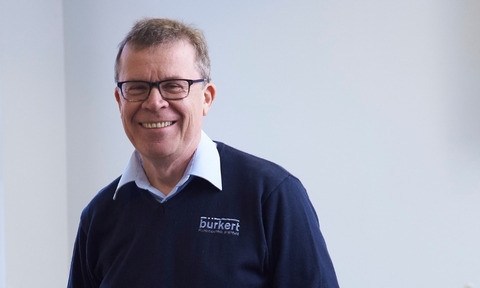Can Surface Acoustic Wave technology transform flowmeters?
2 Oct 2018

Accurate flow control boosts process efficiency and quality, so no wonder companies default to trusted technology, says Burkert’s Ian Webster. Yet the advent of Surface Acoustic Wave in flowmeters has produced a challenger, he claims...
For those involved in hygienic applications, equipment used for product manufacturing must meet stringent hygiene standards whilst also delivering excellent performance.
Coriolis flowmeters have been regarded as the top-of-the-tree in terms of specification due to their versatile capabilities for both fluids and gases and ability to measure mass flow. However, the initial cost can be high and they do have some constraints.
The design of the flowmeter causes a pressure drop across the flowmeter and this can affect the upper limit of the measurement range. The pressure drop increases with viscosity as well as flowrate and the corresponding velocity through the meter. Additionally, the size and weight requires it to be carefully supported within the process pipework.
The Coriolis flowmeter suits a wide range of applications for fluid and gas measurement with high levels of accuracy; 0.1% of flow rate which can be improved to 0.05% with special calibration procedures. This design is also capable of bidirectional measurement without need for inlet or outlet sections in the installation.
The result is a flowmeter with an accuracy of up to +/-0.4% and a repeatability of +/-0.2% of measured value with fluid temperatures up to 140°C
However, it is often not a straight-through device and this can have some major drawbacks.
Furthermore, the mass flow measurement may not be required for the application but a Coriolis flowmeter will have been specified purely on the need for accuracy.
Seismic change
Using Surface Acoustic Wave (SAW) technology, Bürkert has developed a flowmeter in which none of the components are in direct contact with the fluid and which causes no restriction to flow.
The main principle of this flow measurement device is based on wave propagation forms similar to seismic waves, which start from an initial point of excitation and spread along the surface of a solid material. FLOWave uses at least four interdigital transducers located on the outside of the measuring tube and that have no direct contact with the fluid. Each transducer acts as transmitter and receiver.
The signals received are processed by the onboard electronics and software which developed in conjunction with a local university that has been studying SAW technology and its applications. Analysis of all the signals and comparisons based on different criteria such as amplitude, frequency and runtimes, allows evaluation of the quality of the measurement, the existence of gas bubbles or solids as well as the kind of liquid. The result is a flowmeter with an accuracy of up to +/-0.4% and a repeatability of +/-0.2% of measured value with fluid temperatures up to 140°C.
Benefits
The internal surface of the FLOWave can be manufactured to the same specification as the rest of the production pipeline so hygienic cleaning processes can be maintained to the highest standard and at lower costs, with no risk of contamination from any components or flow restriction.
System vibration in the plant, magnetic and electrical effects as well as the conductivity of the liquid do not affect accuracy or reliability of the flow measurements, while SAW technology has the ability to distinguish between laminar and turbulent flows.
Installation is less complicated as it can be mounted in any orientation and requires a less space than similar devices using traditional measurement techniques. The FLOWave can also be specified with or without a display module that can be positioned to suit the final orientation in the process pipework.
In addition, this technology requires considerably less energy to operate; approximately one third of that required by a standard Coriolis flowmeter, which can have a significant impact on running costs and overall total cost of ownership (TCO).
Ian Webster is field segment manager, Hygienic - Pharmaceutical for Bürkert

